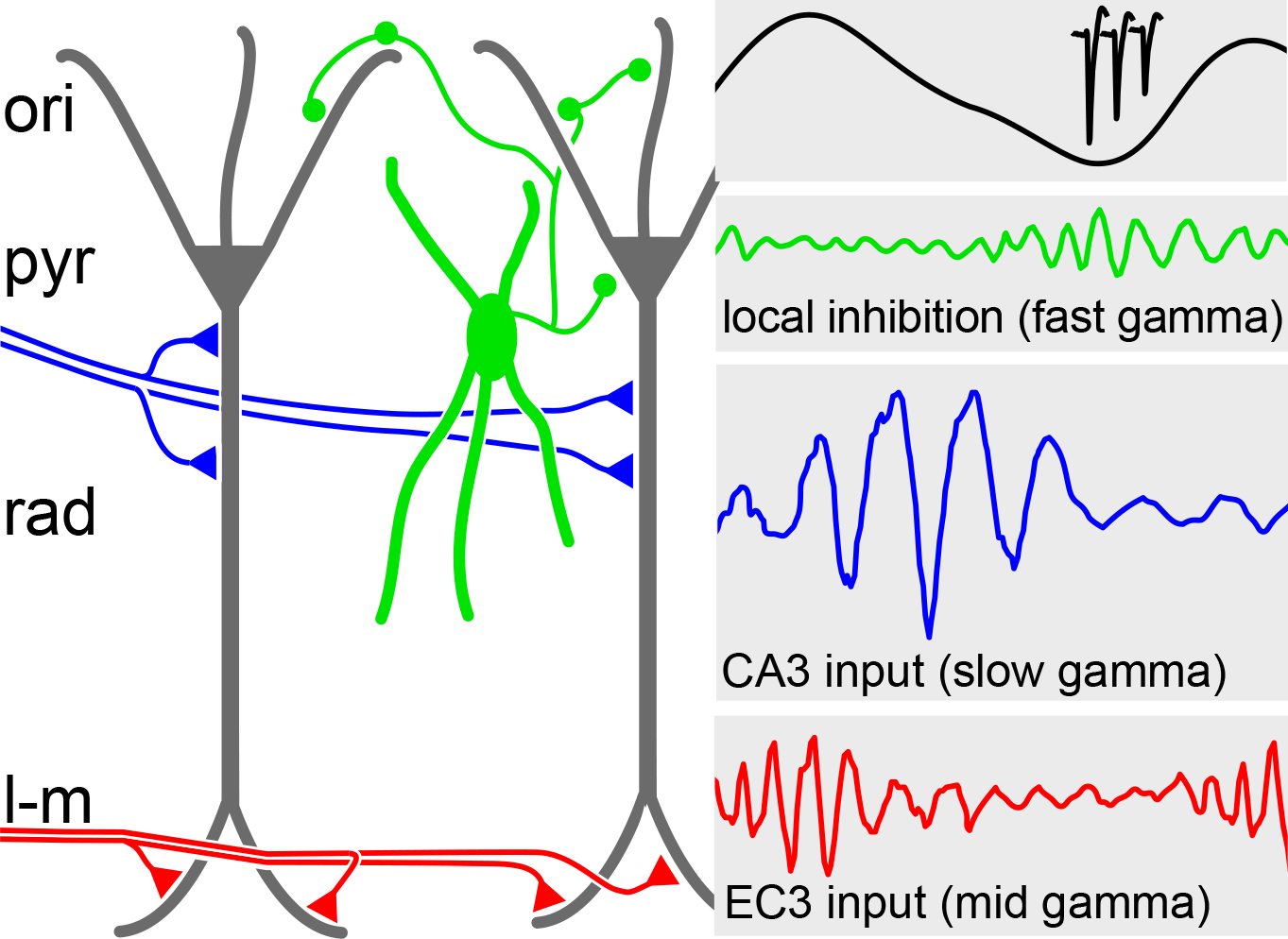Over and above frequency: Gamma oscillations as units of neural circuit operations.
Nerve cells can coordinate their electrical activity in a rhythmic manner, giving rise to brain waves. How to define these brain waves, interpret their modulation and identify their roles are questions central to scientific research in the field of systems neuroscience. In this Perspective, the authors present recent findings on a type of brain waves referred to as gamma oscillations with the view to discuss their biological definition and meaning.
Gamma oscillations (∼30-150 Hz) are widespread correlates of neural circuit functions. These network activity patterns have been described across multiple animal species, brain structures, and behaviors, and are usually identified based on their spectral peak frequency. Yet, despite intensive investigation, whether gamma oscillations implement causal mechanisms of specific brain functions or represent a general dynamic mode of neural circuit operation remains unclear. In this perspective, we review recent advances in the study of gamma oscillations toward a deeper understanding of their cellular mechanisms, neural pathways, and functional roles. We discuss that a given gamma rhythm does not per se implement any specific cognitive function but rather constitutes an activity motif reporting the cellular substrates, communication channels, and computational operations underlying information processing in its generating brain circuit. Accordingly, we propose shifting the attention from a frequency-based to a circuit-level definition of gamma oscillations.

2023. Neuron, 111(7):936-953.